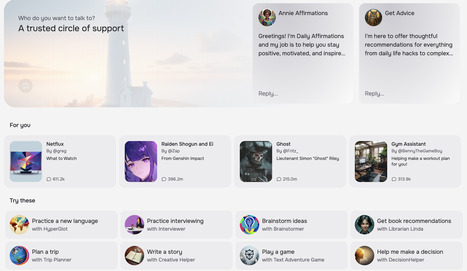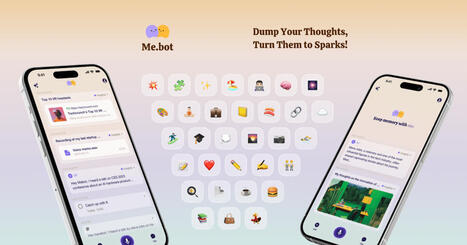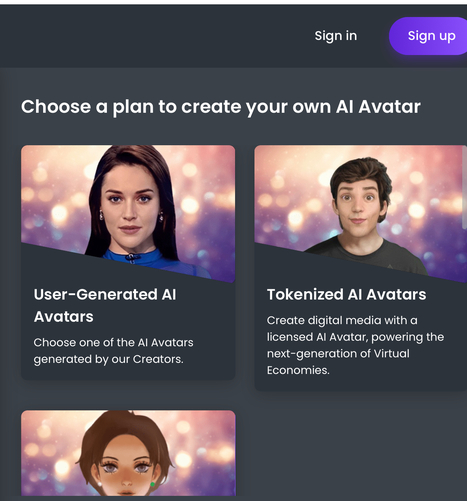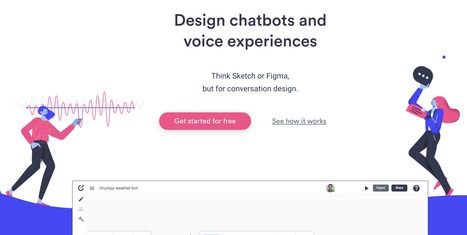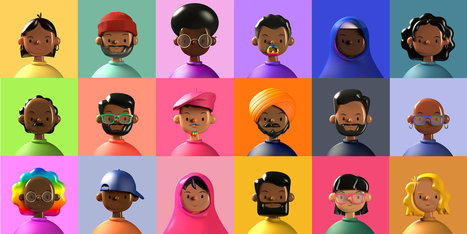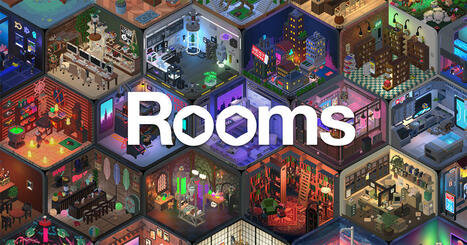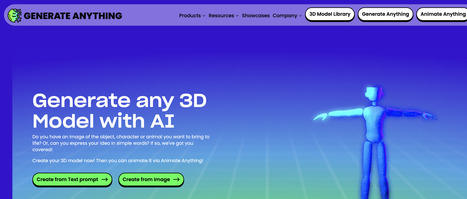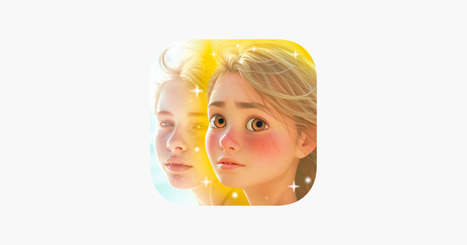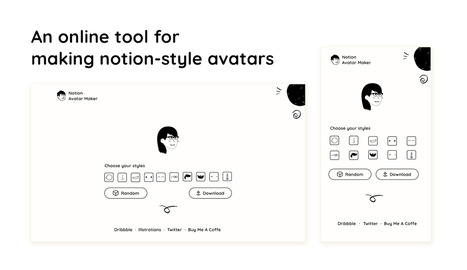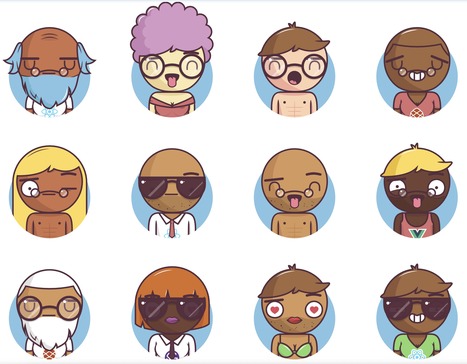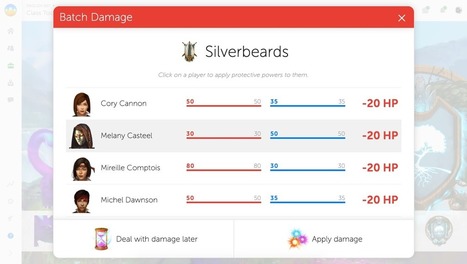 Your new post is loading...
 Your new post is loading...

|
Scooped by
Ana Cristina Pratas
October 8, 2014 9:51 AM
|
Gamification.org is the leading resource and community for gamification information, research and examples in over 18 languages.

|
Scooped by
Ana Cristina Pratas
December 3, 2024 3:09 AM
|
The AI Comic Factory is an online AI Comic Book Generator platform that allows you to generate your own comic book with the help of Hugging Face Space.

|
Scooped by
Ana Cristina Pratas
November 18, 2024 11:30 AM
|
Octokit is an all-in-one customize online tool for agencies that provides latest creative marketing techs like AR Filter, Min

|
Scooped by
Ana Cristina Pratas
November 8, 2024 11:11 AM
|
Unleash your imagination with Fabled—your all-in-one roleplaying engine to craft, manage and play like never before.

|
Scooped by
Ana Cristina Pratas
October 15, 2024 7:29 AM
|
Free authentic looking AI generated profile pictures for your designs, saving you hours searching stock photo sites.

|
Scooped by
Ana Cristina Pratas
October 10, 2024 11:08 AM
|
Assess & develop your employees’ soft skills with our AI-driven, gamified and role-playing stories.

|
Scooped by
Ana Cristina Pratas
October 8, 2024 2:34 PM
|
Meet AIs that feel alive. Chat with anyone, anywhere, anytime. Experience the power of super-intelligent chat bots that hear you, understand you, and remember you.

|
Scooped by
Ana Cristina Pratas
August 7, 2024 9:56 AM
|
Me.bot serves as your personal AI assistant, seamlessly integrating with your mind and the world around you. It is an extension of your brain, capable of managing your schedule, organizing your thoughts, sparking creativity, or preserving your memories.

|
Scooped by
Ana Cristina Pratas
July 15, 2024 3:24 AM
|
Synthesia's new technology is impressive but raises big questions about a world where we increasingly can’t tell what’s real.

|
Scooped by
Ana Cristina Pratas
October 30, 2020 11:36 AM
|

|
Scooped by
Ana Cristina Pratas
July 1, 2020 9:18 AM
|
Your conversational design suite. Design and prototype your next chatbot or voice assistant. Create a mockup of your project on Messenger, Slack, Google Assistant, Alexa and more. The next generation design solution for chatbots and voice.

|
Scooped by
Ana Cristina Pratas
June 18, 2020 12:53 PM
|
Toy Faces is a fun diverse library of 3D avatars for your design mockups and personal use. Inspired mostly by ordinary folks and some troublemakers Toy Faces helps your designs to be a bit more fun and diverse.

|
Scooped by
Ana Cristina Pratas
June 4, 2020 3:49 AM
|
Create, Share, and Discover Augmented Reality content from your phone! Send your friends secret Virtual Graffiti! Go on Augmented Reality Scavenger Hunts! Find hidden art! Share 3D Models with your friends!
|

|
Scooped by
Ana Cristina Pratas
December 12, 2024 11:27 AM
|
A free 3D modeling tool for
interior designers, architects and DIY'ers. Create virtual floor plans, room
layouts and house designs in minutes. Try it now.

|
Scooped by
Ana Cristina Pratas
November 28, 2024 11:53 AM
|
Create & browse interactive rooms on web and iOS.

|
Scooped by
Ana Cristina Pratas
November 17, 2024 4:40 AM
|
Inspired by studies showing how increased “future self-continuity”—the degree of continuity an individual feels with their future self—can positively influence saving behavior, academic performance, mental health, and subjective quality of life, our interactive, web-based chat platform seeks to...

|
Scooped by
Ana Cristina Pratas
October 30, 2024 4:30 AM
|
Explore the fusion of AI with Educational Game Design to create engaging, adaptive learning experiences for students of all ages.

|
Scooped by
Ana Cristina Pratas
October 11, 2024 10:37 AM
|
3D Animation and Automated Rigging platform powered by Machine Learning. Unlimited 3D models for games, apps and the metaverse.

|
Scooped by
Ana Cristina Pratas
October 10, 2024 11:06 AM
|
Turn your selfies and daily photos into gorgeous studio shots, creative and artistic ANIMATIONS and renderings in just ONE TAP. It’s like magic! professional photography, 2D to 3D, face animation, sketch to realistic, and more!
Cooraft brings the power of AI to your fingertips, transforming ordinar…

|
Scooped by
Ana Cristina Pratas
September 23, 2024 12:40 PM
|
NFree online tool to create personalized avatars inspired by the popular collaboration tool Notion. Choose from a variety of facial features, hairstyles, and accessories to create an image that represents you.

|
Scooped by
Ana Cristina Pratas
August 5, 2024 12:31 PM
|
Explore RapportSign up free, no credit card required Get your free account Rapport is the only platform that gives you the freedom to mix and match all the components necessary to create, animate, and deploy interactive characters with emotional intelligence, in any language, on any platform.

|
Scooped by
Ana Cristina Pratas
July 15, 2024 3:23 AM
|
Synthesia's Expressive AI Avatars welcome a new era of video communications and knowledge sharing at work

|
Scooped by
Ana Cristina Pratas
July 11, 2020 10:04 AM
|
Combine expressions, clothing, hair styles and colors into billions of different unique characters.

|
Scooped by
Ana Cristina Pratas
July 1, 2020 4:53 AM
|

|
Scooped by
Ana Cristina Pratas
June 16, 2020 3:32 PM
|
Hundreds of avatars depicting people from different cultures, nationalities, ethnicities, religions, and occupations.

|
Scooped by
Ana Cristina Pratas
April 29, 2020 2:20 AM
|
Battles are fun ways to prepare your students for tests and quizzes and assess their learning. They are meant as a way to review for formative assessments during class, and students answe
|







 Your new post is loading...
Your new post is loading...







